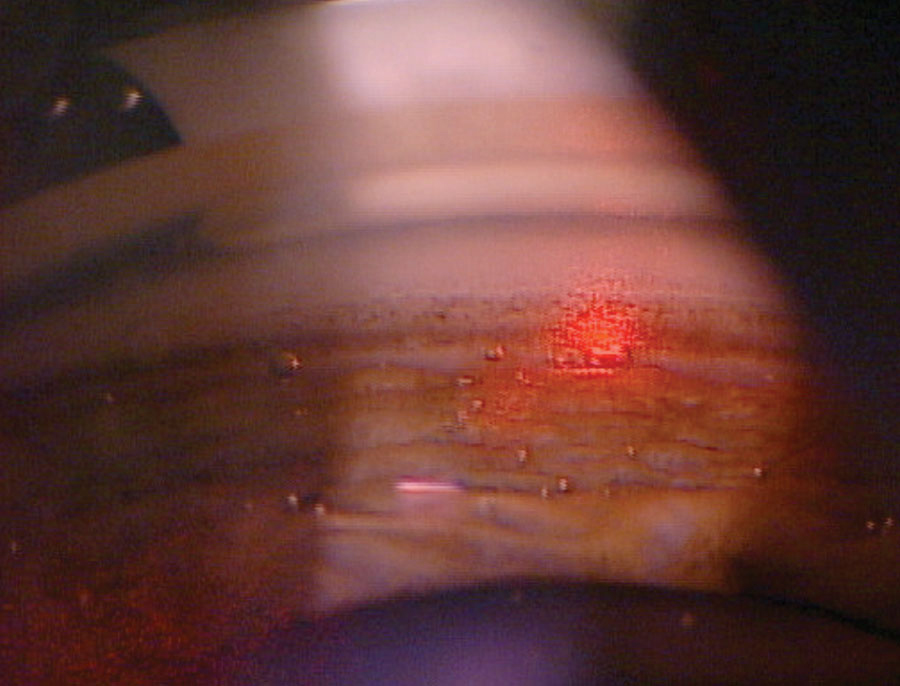 |
|
SLT outperformed glaucoma drop therapy in managing progression and IOP levels long-term. Photo: Nathan Lighthizer, OD. Click image to enlarge. |
New research from an extension of the LiGHT trial in the UK further documents how selective laser trabeculoplasty (SLT) can result in better outcomes than commonly used IOP-lowering eye drops. This prospective study, published in the Ophthalmology journal, compared open-angle glaucoma and ocular hypertension patients after six years of treatment with either of the two methods.
The initial three-year trial included 692 patients, of which 524 completed another three years in the study for a total of six years. From the vantage point of six years of treatment, we now know more about the durability of the treatment effect. The SLT arm of the extension study had 69.8% of eyes remain at the target IOP or even below the target without any need for further medical or surgical intervention. The SLT group also saw a lower rate of disease progression at 19.6%, compared to the drops group at 26.8%.
The drops group additionally needed more trabeculectomies and cataract surgeries than patients who underwent trabeculoplasty. For those who did need trabeculectomy in the SLT group, none were needed after the first three years and the rate was almost three times lower than the drops group after the entire six-year period. Cataract surgery was needed in at least 50% more eyes in the drops group over six years than the SLT group. This particular finding reflects evidence found by the Early Manifest Glaucoma Trial indicating eyes treated with IOP lowering drops display a greater need for surgical cataract removal.
The initial three years of the study concluded with 78% of eyes in the SLT arm not needing topical therapy. The almost 70% that did not need topical therapy after six years indicates that the drop-off in efficacy is not too large; from this, the researchers conclude that SLT is an important part of long-term management of glaucoma and hypertension.
While those in the SLT group were permitted a third round of the procedure after the three-year mark, a remarkable 90% only needed one or two total treatments. Even further, over half (55.5%) needed only a single treatment in six years, demonstrating how much potential there is for trabeculoplasty to improve patients’ treatment options.
The researchers also point out that safety with SLT treatment is very good, as it has no sight-threatening complications. They do caution, though, that the population of this study included largely ocular hypertension and mild glaucoma cases, both groups where IOP reduction targets are much less stringent than for advanced glaucoma. Despite this being the case, their research still demonstrates that “SLT has been shown to be a safe alternative to eye drops in areas where advanced glaucoma is more common and where treatment resources and access to these are limited,” according to the authors. “The proven safety of SLT in such areas can rapidly transform glaucoma treatment and prevent sight loss.”
Gazzard G, Konstantakopoulou E, Garway-Heath D, et al. LiGHT trial: 6-year results of primary selective laser trabeculoplasty versus eye drops for the treatment of glaucoma and ocular hypertension. Ophthalmology. 2022. [Epub ahead of print]. |

